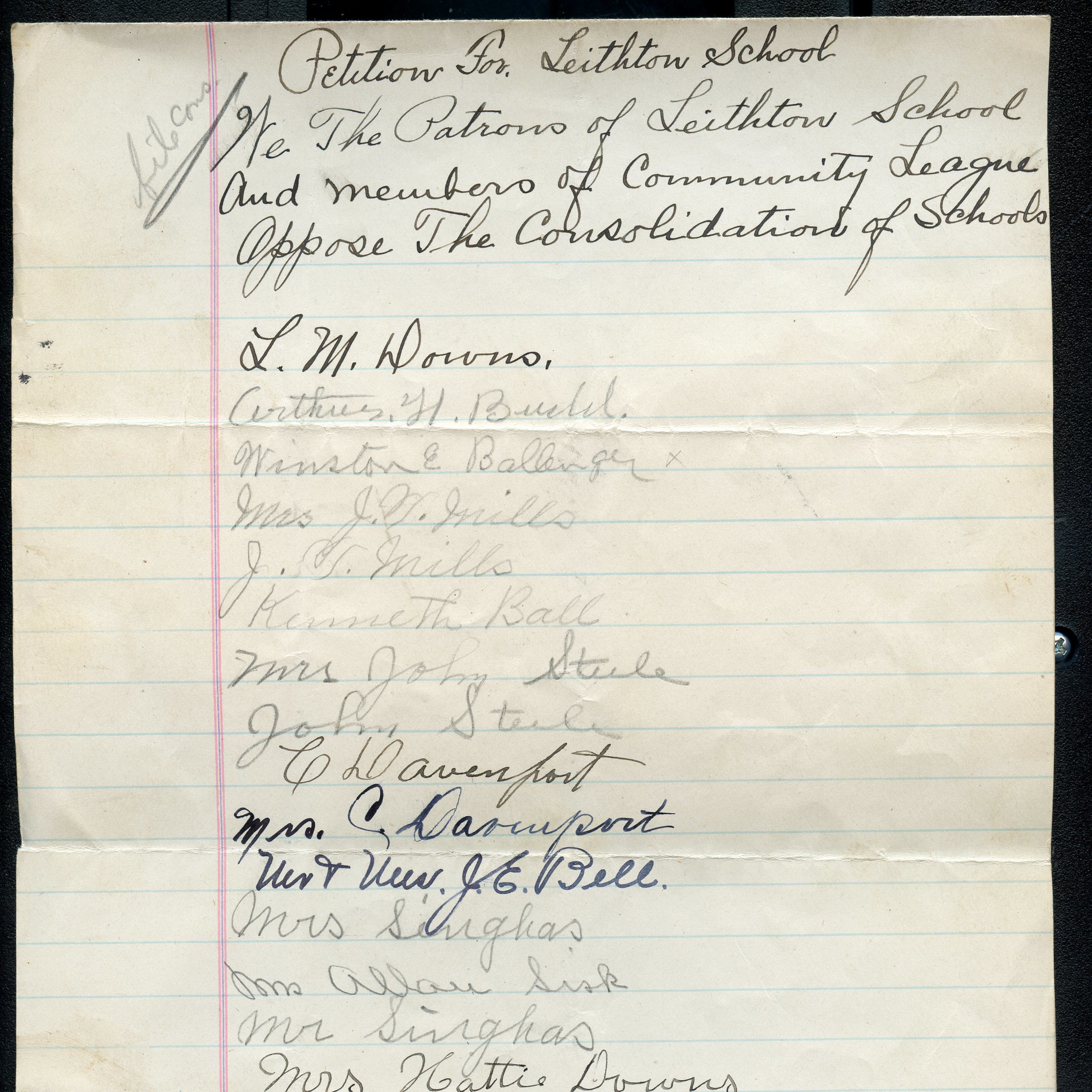Leithton Colored and White
Opening of Colored school unknown. We believe that the white school Leithton replaced the colored school structure in 1917, though this needs to be confirmed. The school was then closed in 1936/37 and the students hauled to Unison-Bloomfield.
Physical and Map Location
In 2023, Pot House is situated nearby to the hamlet Leithtown and Foxcroft School, intersection of Rt 626 and Mountville Road.
Petitions
White Petition Box, EWP Archives. Parents were opposed to the consolidation of schools.
Transportation
History
- Leithton was also known as the Pot House school. See the exchange of letters in April 1922 between O.L. Emerick, Superintendent, and Miss Charlotte H. Noland of Middleburg.
- We believe that the white school Leithton replaced the colored school structure in 1917, though this needs to be confirmed. With the notable exception of Banneker after integration, white students were not placed in former colored schools.
- 1917, Oct 23. Emerick Diary noted school was closed (pg 24).
- Student card records dates from 1917/18 to 1936/37 and indicate the structure was burnt down in 1922/23 and then replaced with a new structure in late 1923. Finalkly closed in 1936/37 when students were hauled to Unison-Bloomfield. EWP: 6.6 Leithton
- Enrollment (source: pg 5, memo of November 29, 1944, to the members of the County School Board. EWP 2.2 ..
- 1917/18 – 43
- 1922/23 – 43
- 1927/28 – 34
- 1932/33 – 22
- 1937/38 –
- Enrollment (source: pg 5, memo of November 29, 1944, to the members of the County School Board. EWP 2.2 ..
- Unfortunately, the only direct records we have for the colored school are from 1895/96 and are in the Library of Virginia. We suspect the school lasted until about 1917, which would mean that the Enrollment figures above for 1917/18 may have been for “colored.” There is the Journal of Work and Expenses by Oscar Emerick, a note for October 23, 1917 (pg 24) in which Emerick says he made a road trip of 45 miles to St. Louis (c), Millsville, Middleburg(C)(2), Middleburg (k), Mountville, Leighton (closed). The Leighton reference must be about the old school building since the new one didn’t take place until 1920. He also visited Leithton on 26 November 1918 (pg 44), though the latter might have simply been the village, not the school (there was no (c) after the name). That doesn’t tell us exactly when the colored school was actually closed, but it does at least provide a probably outer marker. I imagine the trip was an orientation mission, as Emerick took charge of the school system that year. He would have wanted to visit each structure.
- There are, however, for those interested in the white school, 22 pages of class lists in the archives, from 1920-21 and 1935-36, when it likely was consolidated over the objections of the white patrons and parents. According to a memo from O.L. Emerick to the County School Board of 29 November 1944, Leithton was closed in the 1937/38 Academic Year and consolidated into one unit, with Blakely Grove, Bloomfield and Unison. Paper Term Reports are in Edwin Washington Archives.
- Replacement of the colored school structure by the white one is recorded in “Loudoun County,” by Oscar Emerick in the Virginia Journal of Education, September 1920 pg 205.
Instructors
We are researching who the white instructors were. Between 1917 and 1936, th e school house only employed one teacher per year, except in 1919-1922, the student body ranged from 58 to 69, this requiring two teachers.
Instructors for the Colored School
- 1895/96: Miss Annie E. Gillem of 1150 15th St., NW, Washington, DC was the “colored” instructor, operating on a 2nd Grade certificate. Ms. Gillem also instructed the previous year at Unison.
- Year Unknown: Miss M.S. Stringfellow. Probably Marie or Mariah Stringfellow, born about 1872 in Fauquier County, where she showed up in the 1920 U.S. census as a Public School Teacher; however, she doesn’t appear in earlier records.
Insurance and Physical Description
